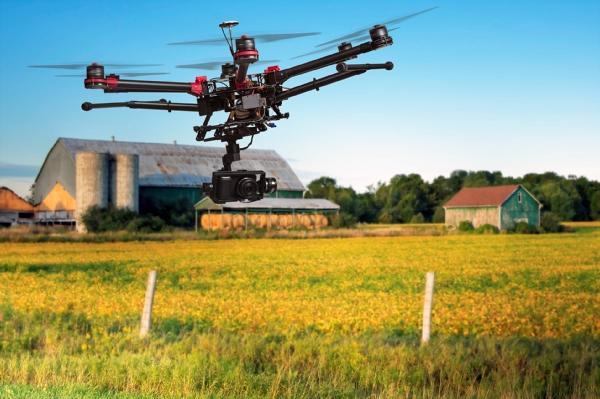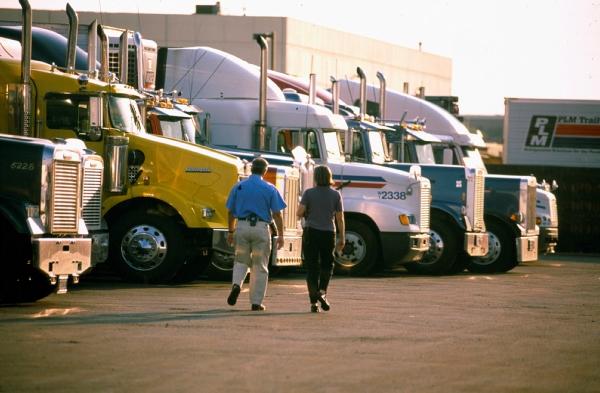How Innovations can Help Your Company Meet Scope 3 Emission Targets
Recent research on corporate sustainability indicates that companies still have a long journey ahead in order to meet their sustainability goals. Only four percent of companies recently surveyed by Bain & Company feel that they’ve succeeded in achieving their sustainability goals, while 47% feel that they’ve failed altogether.
These numbers might seem discouraging to some, but not to me. I’ve been in the sustainability space for over five years, working primarily in supply chains, and over this time, I’ve learned that the first step to success is acknowledging where you’re starting from. I’m also encouraged by EDF+Business, which has been helping companies meet their supply chain goals for over 25 years. These numbers show me that more and more companies are doing the hard work of evaluating and reporting on their own operations and supply chains. If you’re a sustainability officer at a large multinational corporation, we know that this can be a daunting task. However, you should relish the fact that you have the opportunity to make meaningful change on a huge scale. It just takes some focus, and the right business strategy.
Measuring and reducing a company’s emissions, both direct and indirect, is paramount to meeting your sustainability goals and moving your company forward in an ever-more environmentally conscious world. However, there are three types of emissions sources — and each of them are incredibly important to understand. The first is a company’s direct emissions, known as Scope 1. These are emissions from sources directly controlled by the company, such as company-owned facilities or vehicles.
Indirect emissions, known as Scope 2 and 3, are those that your company doesn’t produce directly, but rather are a result of activities up and down your supply chain. Scope 2 are emissions from purchased or acquired electricity, steam, heating and cooling, while Scope 3 is everything else. Fifteen different categories fall under Scope 3, encompassing everything from the emissions of a third-party manufacturer in your supply chain to the emissions of the waste processing company that handles your company’s refuse. Unsurprisingly, Scope 3 emissions often comprise the largest piece of a company’s total footprint. And they’ve largely been overlooked — until now, that is.
As a major environmental concern, Scope 3 emissions also represent a huge environmental opportunity. Accordingly, companies have begun to taking their full supply chains into account and setting Scope 3 emissions reduction goals. According to the Science Based Targets initiative, 464 companies have made emissions reductions commitments, with major corporations such as Coca-Cola, Kellogg’s and Procter & Gamble Co. incorporating Scope 3 into their sustainability goals. Walmart’s Project Gigaton aims to remove 1 gigaton of greenhouse gas (GHG) emissions from the retailer’s supply chain by 2030, an undertaking that 400 suppliers in the U.S., China, and the U.K. have already joined. These days, Scope 3 emissions targets are the norm for sustainability leaders.
Setting Scope 3 goals is just the first step, however. Companies making Scope 3 commitments still need to determine how to track emissions reductions and provide guidance to their suppliers on implementing best practices and collecting data.
Technology could provide the help companies need with this next step. The Fourth Wave of environmentalism, which leverages emerging technologies to address environmental problems, is already helping to roll back deforestation in the Amazon, uncover invisible methane leaks, and much more. Fourth Wave solutions are driven by innovation — technological breakthroughs, new public policy ideas, and new ways to collaborate and communicate — that gives people the power to take action.
Here is just a sampling of Fourth Wave innovation in the realm of Scope 3 emissions:- Satellites over Brazil are monitoring forests throughout the country for signs of tree loss, feeding data into an online system that sends weekly deforestation alerts to the authorities and allows for detection of deforestation at a smaller scale than ever before in the region.
- Blockchain has found numerous applications in supply chains, leading to improvements in traceability and accounting across industries. Tuna in several fisheries around the world are being tagged and tracked using blockchain technology, giving consumers peace of mind that their purchases have been sustainably (and legally) caught. Additionally, by tracking food products from the farm to the shelf, retailers will be able to identify sources of contamination, leading to fewer cases of foodborne illness and money saved during recalls (up to 80% for the average product).
- Digital platforms have made it possible for small, local restaurants to retail giants like Walmart to redistribute surplus food with the non-profit Feeding America. By helping businesses donate excess goods to the local pantry or food program best suited to them, companies like General Mills, Starbucks, and Walmart avoid food waste and associated GHG emissions.
- Precision agriculture allows farmers to identify solutions that optimize fertilizer usage, improve efficiency and reduce costs. Smithfield Foods — the first pork producer to set a Scope 3 goal — has been utilizing this technology to meet its emissions reduction goals.
Smart technologies such as these can assist companies in measuring and monitoring the GHG emissions across their supply chains, enabling them to achieve their Scope 3 reduction goals — and accurately report them.
Interested in learning more about measuring, tracking and reducing GHG emissions in your company’s supply chain? Stay tuned for the next EDF+Business Supply Chain blog, where we’ll focus on how companies with agricultural supply chains can quantify and reduce their Scope 3 emissions with improved precision agriculture methodologies and other Fourth Wave technologies.




